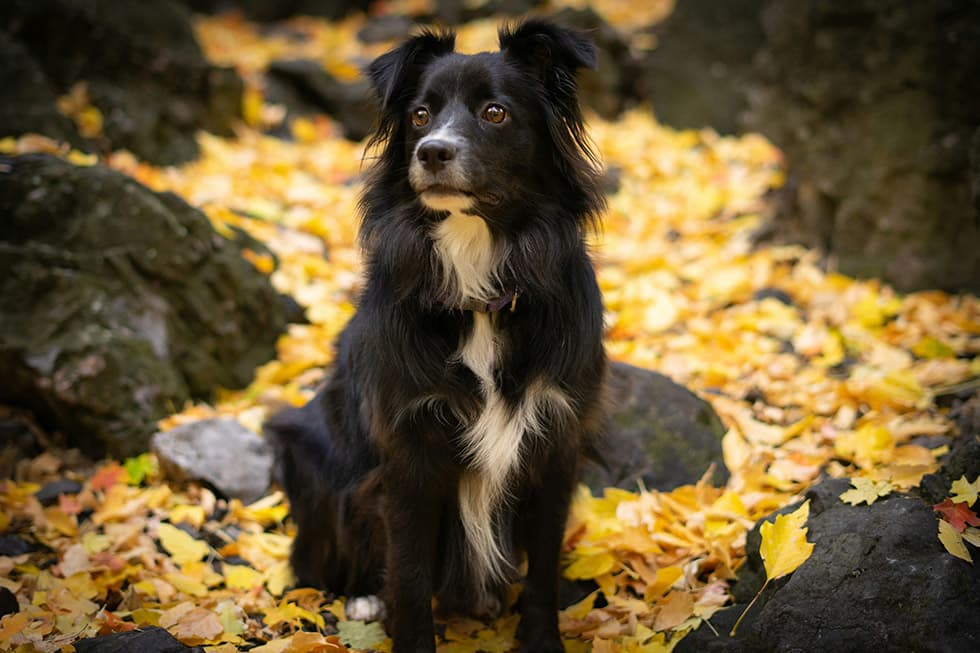Protect Your Pet This Autumn: A Guide to Toxic Mushrooms & Garden Hazards

Ah, autumn! The air gets crisp, the leaves turn into a gorgeous kaleidoscope of colours, and we all feel that urge to get out in the garden. But while we're enjoying the season, it’s crucial to remember that this time of year can hide some serious dangers for our four-legged family members.
The very things that make autumn so unique—cooler temperatures and damp soil—create a perfect storm for hazards to pop up, especially toxic mushrooms and common garden products. Let's be real, our pets explore the world with their noses and mouths, so we have to be their first line of defense.
The Silent Threat of Wild Mushrooms
Have you ever walked into your backyard after a rainy night to find a mysterious patch of mushrooms that wasn't there yesterday? It happens that fast. While some are harmless, others are incredibly dangerous, and telling them apart is a job for a mycologist, not a pet owner.
Some species, like the infamous 'death cap' (Amanita phalloides), are so lethal they can cause catastrophic liver failure with just a nibble. It's truly terrifying. If your pet suddenly starts vomiting, has diarrhea, seems wobbly, or experiences seizures after being outside, don't just 'wait and see.' Mushroom poisoning is a veterinary emergency. Rushing to the vet immediately could be the difference between life and death.
When Your Garden Becomes a Danger Zone
I love spending an autumn weekend getting the garden ready for winter, but I've learned to be extremely careful with the products I use. Many common gardening aids are packed with substances that are toxic to our furry friends.
Take cocoa mulch, for instance. It smells wonderfully chocolatey, right? Well, that's because it contains theobromine, the same compound that makes chocolate a no-go for dogs. Some fertilizers are also surprisingly appealing to canines, with an earthy scent that might smell like a five-star meal to them. Always read the labels, and more importantly, store these chemicals as you would any poison: locked away and far out of reach of curious paws and noses.
Simple Steps for a Safer Yard
So, what's a proactive pet parent to do? It's all about being vigilant and creating safe habits. Think of it as your seasonal pet safety checklist.
- Daily Yard Patrol: Make it a morning ritual to sweep your yard for any new mushroom growth. Pluck them, bag them, and dispose of them safely.
- Leash Up on Walks: When you're out and about, a leash is your best friend. It prevents your dog from gobbling up something mysterious in a park or on a nature strip.
- Secure Storage is Key: All your garden products—fertilizers, pesticides, baits—should be stored in a locked cabinet or on a high shelf in a shed pets can't access.
- Know the Signs: Be on high alert for any signs of poisoning. If you suspect your pet has ingested something toxic, contact your vet immediately. Awareness and quick action are everything.
More Hidden Autumn Hazards to Watch For
Shifting gears a bit, mushrooms and mulch aren't the only seasonal risks. Here are a few other common dangers that pop up as the weather cools down in Australia.
Snail and Slug Bait
As we prepare our garden beds, snail bait often comes out. The problem is, many of these pellets contain metaldehyde, a substance that is brutally toxic to pets. It's a shockingly common cause for emergency vet visits, with some claims for treatment reportedly exceeding $6,000 in recent years. Symptoms are severe and include tremors and seizures.
Rodenticides (Rat and Mouse Bait)
The cooler weather sends rodents scurrying for warmth inside our homes. If you use rat bait, remember the double-danger: your pet could eat the bait directly, or they could suffer from secondary poisoning by catching and eating a rodent that consumed the bait. It’s a horrible way to go, often causing internal bleeding or kidney failure. Consider pet-safe traps or ensure any bait stations are completely inaccessible to your animals.
Fallen Fruit and Pits
That beautiful old fruit tree in the yard can become a source of trouble. Fallen fruits like apricots, apples, and peaches can rot and ferment on the ground, but the bigger risk is the pits and seeds. They can easily become a choking hazard or cause a painful and dangerous intestinal blockage.
Pesky Toads
Especially for those living in or travelling to warmer regions like Queensland and Northern NSW, cane toad activity can still be high in early autumn. These toads secrete a potent toxin from their glands, and a dog that mouths or bites one is in serious trouble. Always supervise your pets outdoors in these areas, especially at dawn and dusk.
Sudden Cold Snaps
Don't underestimate a sudden drop in temperature, particularly in southern Australia. Puppies, senior pets, and short-haired breeds can be vulnerable to hypothermia. Make sure their bedding is warm, dry, and away from drafts. A stylish doggy coat isn't just a fashion statement—it's a practical way to keep them comfortable on chilly morning walks.
With a little bit of awareness and preparation, we can make sure our pets enjoy a safe and happy transition into the cooler months.